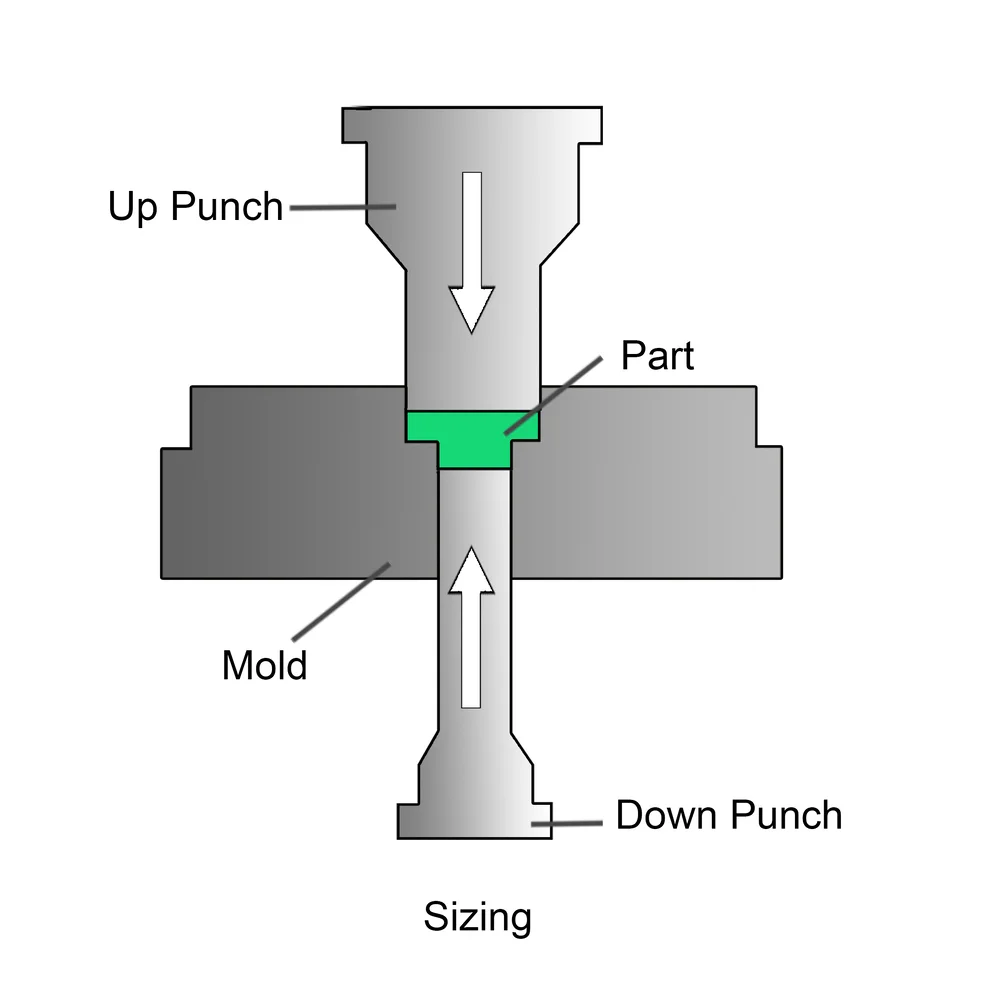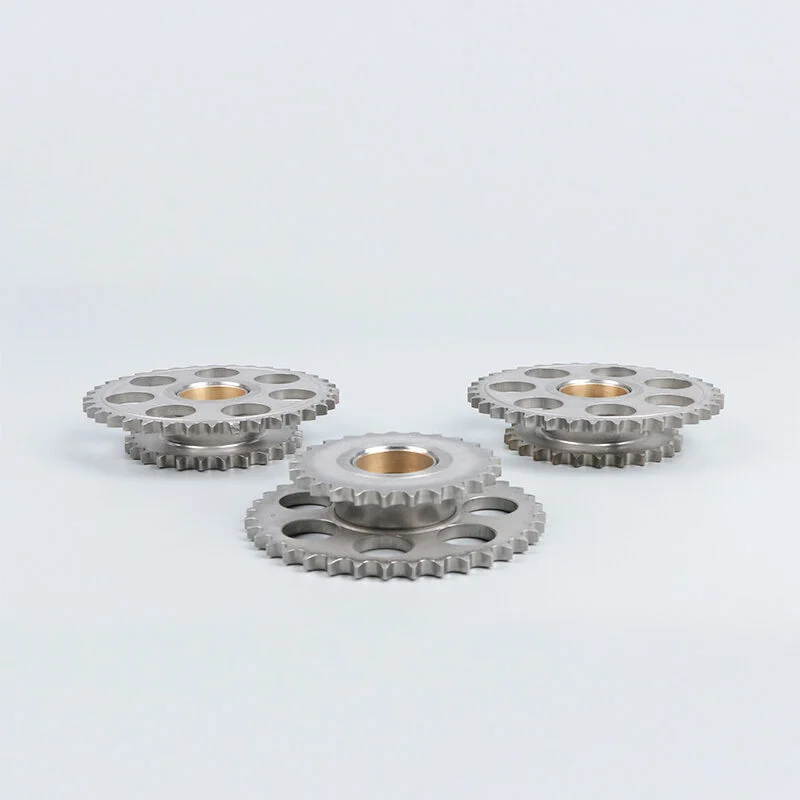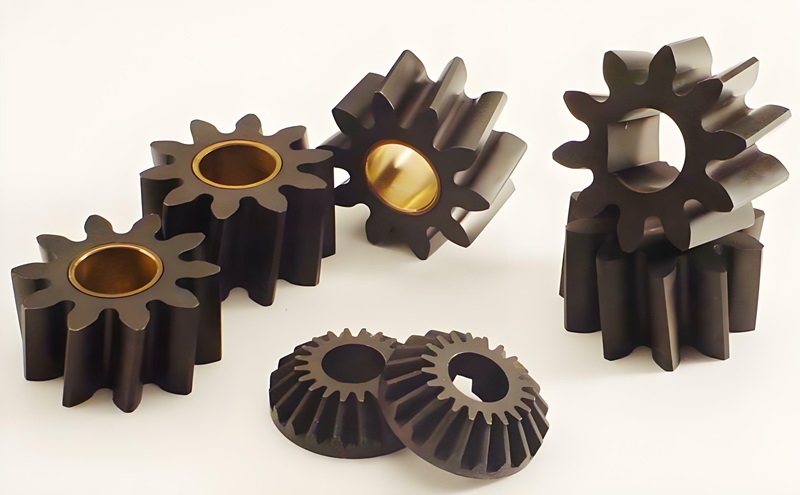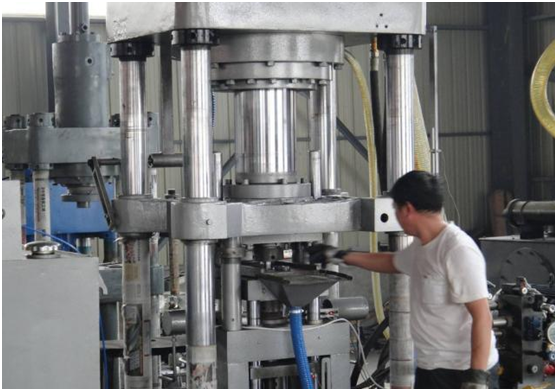Sizing in powder metallurgy is a secondary process that refines sintered parts to meet exact specifications. So, what is sizing in powder metallurgy? It enhances dimensional accuracy, corrects shape deviations, and improves surface quality. For instance, it can achieve tolerances as tight as 0.01mm while reducing surface roughness for a smoother finish. With the global powder metallurgy market projected to grow at a CAGR of 12.9% from 2023 to 2030, the demand for sizing continues to rise across industries like aerospace and healthcare. This process ensures that components meet stringent design requirements, delivering consistent performance and superior quality.

Definition and Purpose of Sizing
What is Sizing in Powder Metallurgy?
Sizing in powder metallurgy is a secondary operation that enhances the precision of sintered parts. You can think of it as a process that fine-tunes components to meet exact design specifications. This method involves re-pressing sintered parts in a mold to correct dimensional deviations caused by thermal expansion or contraction during sintering. By applying controlled pressure, sizing eliminates errors in size and shape through plastic deformation.
Here’s what sizing achieves:
- It improves dimensional and shape accuracy.
- It enhances surface quality and mechanical properties.
- It corrects size changes that occur during sintering.
This process is essential because achieving high tolerance precision in a single step is nearly impossible. Sizing ensures that parts meet stringent requirements, making it a critical step in powder metallurgy.
Why is Sizing Important?
The sizing process plays a vital role in ensuring the quality and performance of powder metallurgy components. It corrects deviations from the design size, ensuring parts fit perfectly in their intended applications. By improving density and reducing porosity, sizing enhances the strength and durability of components. Additionally, it improves surface quality, which contributes to better performance characteristics.
You’ll also find that sizing reduces the need for additional processing steps, saving both time and costs. It stabilizes product consistency across batches, ensuring reliable performance. Moreover, by eliminating residual stress, sizing extends the service life of components. This process is indispensable for industries requiring high precision and reliability, such as aerospace and healthcare.
The Sizing Process
Overview of the Process
The sizing process in powder metallurgy involves several key steps to ensure precision and quality. You begin with pre-sizing, where sintered parts are inspected, and their dimensions are measured. This step identifies any deviations from the desired specifications. Next, die design and maintenance play a crucial role. High-strength tool steels are used to create molds that can withstand repeated use. Proper design ensures easy removal of components after sizing.
During the sizing step, vertical pressure is applied to the part inside the die. This pressure deforms the surface slightly, filling the mold cavity and correcting dimensional inaccuracies. Finally, quality control ensures the finished product meets exact specifications. Tools like micrometers and coordinate measuring machines (CMM) are used to verify dimensions and properties. These steps work together to refine the sintered parts, making them suitable for high-precision applications.
Cold Sizing
Cold sizing is performed at room temperature. You use this method to correct minor dimensional deviations and improve surface finish. The process involves placing the sintered part into a die and applying pressure without heating. Cold sizing is ideal for components that require minimal adjustments or have low thermal sensitivity. It also enhances the mechanical properties of the part by increasing density and reducing porosity. Tools like robotic arms or manual methods are often used to handle parts during this process, depending on production volume.
Hot Sizing
Hot sizing involves heating the sintered part before applying pressure. This method is used when significant dimensional corrections are needed or when the material has high resistance to deformation at room temperature. Heating softens the material, making it easier to reshape without causing cracks or defects. You’ll find this technique particularly useful for components with complex geometries or those made from hard materials. Hot sizing improves both dimensional accuracy and mechanical properties, ensuring the part meets stringent design requirements.
Benefits of Sizing
Dimensional Accuracy
Sizing significantly enhances the dimensional accuracy of sintered parts, ensuring they meet precise design specifications. You can achieve tolerances as tight as 0.01mm, which is critical for applications requiring high precision. This process corrects shape errors caused during sintering and reduces dimensional variations. By stabilizing product consistency, sizing ensures that parts maintain uniform dimensions and properties across different production batches.
| Benefit | Description |
|---|---|
| Improved Tolerances | Sizing can achieve dimensional accuracy of up to 0.01mm, significantly enhancing precision. |
| Lower Dimensional Variations | Reduces the range of dimensional variation, ensuring parts closely match standard dimensions. |
| Higher Consistency | Maintains uniform dimensions and properties across different batches, stabilizing product performance. |
Surface Quality
The sizing process also improves the surface quality of powder metallurgy components. By compacting surface particles closer together, it reduces roughness and eliminates irregularities. This results in a smoother and more uniform finish. You’ll notice that parts treated with sizing exhibit better performance characteristics, such as reduced friction and enhanced wear resistance. These improvements make sizing indispensable for industries where surface quality directly impacts functionality and durability.
- Sizing reduces roughness by compacting surface particles.
- It creates a uniform and smooth finish.
- Enhanced surface quality improves friction and wear resistance.
Cost Efficiency
Sizing offers significant cost-saving benefits in powder metallurgy manufacturing. By improving dimensional accuracy, it reduces or eliminates the need for additional machining steps. This leads to lower production costs and shorter manufacturing times. For large-scale production, sizing minimizes material waste and enhances efficiency. You can rely on this process to streamline operations while maintaining high-quality standards, making it an economically viable solution for mass production.
- Sizing enhances size and shape accuracy.
- It reduces the need for traditional machining steps.
- This process saves time and costs, especially in mass production.

Applications of Sizing

Industries Using Sizing
Sizing plays a crucial role in several industries that demand high precision and reliability in their components. You’ll find it especially valuable in sectors where dimensional accuracy and surface quality are non-negotiable. The following table highlights the industries that most commonly utilize sizing in their powder metallurgy processes:
| Industry |
|---|
| Automotive |
| Aerospace |
| Electronics |
| Medical |
In the automotive industry, sizing ensures that gears, bearings, and other mechanical parts meet tight tolerances for optimal performance. Aerospace applications rely on sizing to produce lightweight yet durable components that can withstand extreme conditions. Electronics benefit from the process by achieving precise dimensions for connectors and housings. In the medical field, sizing enhances the quality of surgical instruments and implants, ensuring they meet stringent safety and performance standards.
Components Benefiting from Sizing
Certain components gain significant advantages from the sizing process due to their functional requirements. You’ll notice that gears and bearings are among the most common beneficiaries. These parts demand exceptional dimensional accuracy and surface finish to ensure smooth operation and long-term durability. Sizing helps achieve these characteristics, making them suitable for high-performance applications.
Mechanical parts with complex shapes also benefit greatly. Accurate forming during sizing reduces the need for additional machining, saving time and costs. This process ensures that components meet design specifications while maintaining consistency across production batches. Whether you’re manufacturing intricate parts or high-precision components, sizing delivers the reliability and quality you need.
Challenges of Sizing
Mold Wear and Maintenance
Mold quality plays a crucial role in the sizing process. You’ll find that poorly maintained or worn molds can drastically affect the final quality of your components. Over time, repeated use causes wear and tear, leading to dimensional inaccuracies and surface defects. Regular maintenance is essential to ensure molds remain in optimal condition. Neglecting this step can result in higher rejection rates and increased production costs.
Errors during mold making or maintenance are common challenges. For instance, mistakes in mold design or fabrication account for 35% of errors, while mold wear contributes to 15%. Unequal shrinking during sintering and irregular set shrinkage each add another 35% and 15%, respectively.
| Type of Error | Percentage |
|---|---|
| Mold making mistake | 35% |
| Mold wear | 15% |
| Unequal shrinking | 35% |
| Irregular set shrinkage | 15% |
By addressing these issues through proper mold care and precision manufacturing, you can significantly improve the reliability of the sizing process.
Material Constraints
Material properties often limit the effectiveness of sizing. Some materials resist deformation, making it difficult to achieve the desired dimensional corrections. For example, high-strength alloys or materials with low ductility require greater force during sizing, which increases the risk of cracks or defects. You must carefully select materials compatible with the sizing process to avoid these challenges.
Additionally, variations in material composition can lead to inconsistent results. Even minor differences in powder particle size or distribution can affect how a material responds to pressure. To overcome this, you should use high-quality raw materials and maintain strict control over production parameters.
Process Limitations
The sizing process itself has inherent limitations. While it excels at correcting minor dimensional deviations, it may struggle with significant shape corrections or highly complex geometries. You’ll notice that parts with intricate designs often require additional machining or finishing steps, which can increase production time and costs.
Another limitation involves the scalability of the process. For high-volume production, maintaining consistent quality across batches can be challenging. Variations in die wear, material properties, or operator handling can introduce inconsistencies. To mitigate these issues, you should invest in advanced equipment and implement rigorous quality control measures.
By understanding these challenges, you can optimize the sizing process to achieve better results and improve overall efficiency.
Sizing plays a pivotal role in powder metallurgy, enhancing product quality, precision, and cost-effectiveness. You benefit from improved density, better mold filling, and optimized sintering behavior. These advancements lead to higher strength, reduced defects, and consistent results. By minimizing process variations, sizing ensures reliable performance, making it indispensable in modern manufacturing with JHMIM’s expertise.

FAQ
What is the difference between cold sizing and hot sizing?
Cold sizing occurs at room temperature, ideal for minor adjustments. Hot sizing involves heating parts, making it suitable for significant corrections or hard materials.
How does sizing improve surface quality?
Sizing compacts surface particles, reducing roughness and irregularities. This creates a smoother finish, enhancing wear resistance and reducing friction for better performance.
Can sizing reduce production costs?
Yes! Sizing minimizes the need for additional machining, saving time and material costs. It also ensures consistency, reducing waste and improving overall manufacturing efficiency. 💡
